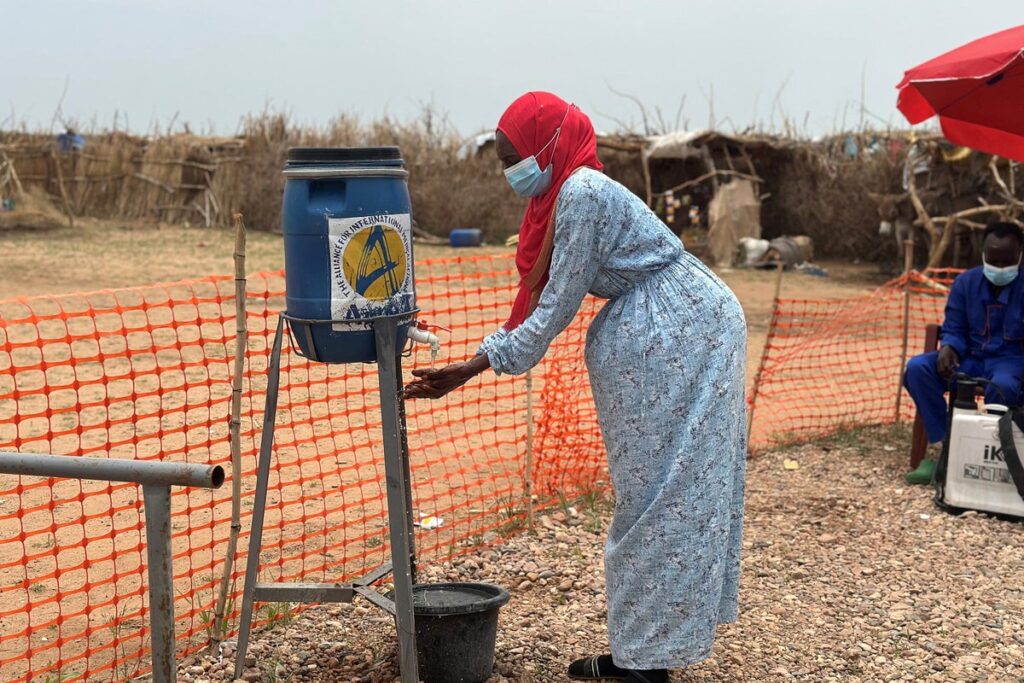August 14, 2025
2 min read
Climate Change’s Effect on Sudan’s Cholera Outbreak, Explained
An ongoing civil war in Sudan has forced millions of people to flee their homes and move to camps, where a lack of water and sanitation infrastructure, along with heavy rains, are fueling a massive cholera outbreak. What role does the environment play in how the outbreak is spreading?
On supporting science journalism
If you’re enjoying this article, consider supporting our award-winning journalism by subscribing. By purchasing a subscription you are helping to ensure the future of impactful stories about the discoveries and ideas shaping our world today.
People in Sudan are experiencing the worst cholera outbreak the country has seen in years, according to a press release sent from the international humanitarian organization Médecins Sans Frontières (MSF), also known as Doctors Without Borders, on Thursday. As of August 11, there have been almost 100,000 suspected cases and more than 2,400 related deaths since the outbreak was declared by Sudan’s Ministry of Health one year ago, the statement said.
The highly-contagious disease is caused by the aquatic bacterium Vibrio cholerae. If humans ingest water or other fluids or foods contaminated with the microorganism, it enters their small intestine and releases a toxin that causes severe diarrhea, vomiting and fluid loss. In extreme cases, this dehydration can lead to death.
The epicenter of the outbreak is in Darfur, the westernmost region of Sudan, but it is spreading to the rest of the country and neighboring Chad and South Sudan. And the spread is occurring as hundreds of thousands of people flee their homes because of an ongoing civil war. Many people have sought refuge in camps and makeshift shelters away from the conflict, but humanitarian groups and residents report that water shortages in those areas have made it difficult to follow hygienic practices, such as washing dishes and food with clean water, according to MSF’s press release. Without clean water, conditions are ripe for the bacteria to spread.
“When there’s social discontent and strife, and it causes damage, breakdown or interference with delivery of water and sanitation, then you create the conditions for the bacterium to become abundant,” says Rita Colwell, an environmental microbiologist at the University of Maryland, College Park.
Health care centers in the country have been overwhelmed. Samia Dahab, a resident of the Otash displacement camp, reported to MSF that health centers have been full in Nyala, a city in Darfur. “Some areas have water, others have kiosks that are far or empty. Some water is salty, and we drink it unboiled, unsure if it’s safe.”
Additionally, environmental factors play a significant role in the outbreak, Colwell says. Vibrio proliferates during heavy rains and floods. And according to the MSF press release, “heavy rains are worsening the crisis by contaminating water and damaging sewage systems.” These conditions stir up sediment and bring more nutrients into the water that Vibrio can feed off, Colwell says, causing bacterial populations to grow. If conditions persist and there is no clean water or sanitation infrastructure, then people have no choice but to consume contaminated water, says environmental engineer Antarpreet Jutla of the University of Florida.
Colwell calls the current outbreak a “concatenation” of sociological events coupled with climate change. Climate change is leading to warmer air and water temperatures, creating an environment in which Vibrio thrives. These factors combined create an environment that makes Vibrio naturally more abundant, and that “just exacerbates person-to-person transmission” she says.

